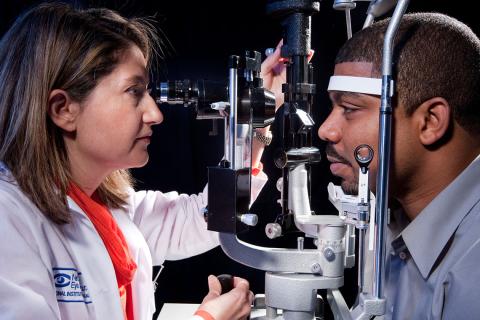Visual Impairment, Blindness Cases in U.S. Expected to Double by 2050

Photo: NEI
With the youngest of the baby boomers hitting 65 by 2029, the number of people with visual impairment or blindness in the United States is expected to double to more than 8 million by 2050, according to projections based on the most recent census data and from studies funded by NEI. Another 16.4 million Americans are expected to have difficulty seeing due to correctable refractive errors such as myopia (nearsightedness) or hyperopia (farsightedness) that can be fixed with glasses, contacts or surgery.
The researchers, led by Dr. Rohit Varma, director of the University of Southern California’s Roski Eye Institute, published their analysis May 19 in JAMA Ophthalmology. They estimate that 1 million Americans were legally blind (20/200 vision or worse) in 2015. Having 20/200 vision means that for clear vision, you would have to be 20 feet or closer to an object that a person with normal vision could see from 200 feet away.
Meanwhile, 3.2 million Americans had visual impairment in 2015—meaning they had 20/40 or worse vision with best possible correction. Another 8.2 million had vision problems due to uncorrected refractive error.
“These findings are an important forewarning of the magnitude of vision loss to come,” said NEI director Dr. Paul Sieving. “They suggest that there is a huge opportunity for screening efforts to identify people with correctable vision problems and early signs of eye diseases. Early detection and intervention—possibly as simple as prescribing corrective lenses—could go a long way toward preventing a significant proportion of avoidable vision loss.”
